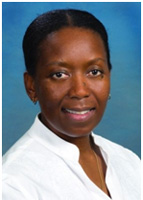Local Publications
The following publications used ISAAC data from the Polokwane centre:
- Wichmann J, Wolvaardt JE, Maritz C, Voyi KVV. Household conditions, eczema symptoms and rhinitis symptoms: relationship with wheeze and severe wheeze in adolescents living in the Polokwane area, South Africa. J Asthma 2007; 44(8): 659-66.
- Wichmann J, Wolvaardt JE, Maritz C, Voyi KVV. Association between children's household living conditions and eczema in the Polokwane area, South Africa. Health Place.2008 Jun;14(2):323-35.Epub Aug 2007.
- Wichmann J, Wolvaardt JE, Maritz C, Voyi KVV. Household Conditions, Eczema Symptoms and Rhinitis Symptoms: Relationship with Wheeze and Severe Wheeze in Children Living in the Polokwane Area, South Africa. Matern Child Health J.2009; 13(1):107-118.Epub Jan 2008.
Polokwane Centre
| Phase One | Phase Two | Phase Three | |||
| Centre: | Polokwane, South Africa ( Africa ) | ||||
| Principal Investigator: | Professor Kuku Voyi | ||||
| Age Groups: | 13-14, 6-7 | Timeframe: | August 2004 to March 2005 | ||
| Sampling Frame: | All schools in a radius of 60 kilometers from the Polokwane Central Business District (CBD) in the Limpopo Province of South Africa. | ||||
Personnel
Ms Chantelle Maritz
Department of Environmental and Occupational Health
School of Health Systems and Public Health
CSIR Building 22, University of Pretoria
PO Box 667
South Africa
Roles:
- Phase Three collaborator for Polokwane
Professor Kuku Voyi

Head, Department of Environmental and Occupational Health
School of Health Systems and Public Health
Faculty of Health Sciences
Univeristy of Pretoria
South Africa
Roles:
- Phase Three Principal Investigator for Polokwane
POLOKWANE ISAAC STUDY CENTRE
A record of decision from an Environmental Impact Assessment (EIA) for the expansion of a Platinum smelter in Polokwane was the driver to get more information about the prevalence of respiratory diseases in the area. The ISAAC toolkit was found to be the most suitable to use. This was to be the second ISAAC centre in South Africa following Cape Town. ISAAC in Auckland was contacted to register the study site and we were promptly accepted and given an identification number. We received videos to accompany the questionnaires.
The education department in the Limpopo Province gave us permission to do the research in the schools. We used the Phase Three questionnaires and attempted to use the video. The questionnaires were translated into North Sotho. We studied the 6-7 year olds and 13-14 year old children. The use of the video questionnaire was abandoned due to the lack of electricity in other parts of the centre. However, this did not interfere with the success of the study.
The results informed the decision of the EIA. In turn the interest in asthma and allergies in childhood increased in researchers and physicians in the province. We believe that the data from Polokwane contributed to the mapping of the disease worldwide. The results were published in a number of journals.
Asthma and childhood allergies are a concern in both the developing and developed world. The results of the ISAAC world map indicate that. We have an intention of mapping asthma and allergies in South Africa, this might take long, but there are two centres that have results already. We indicated interest in ISAAC Phase Five, but this phase is not officially supported and will not go ahead. We are not going to be deterred by this, there is a study in Gauteng Province that is being proposed and the university and the Provincial education department has given permission to proceed. In addition to the Phase Three questionnaire, this study will also use the clinical Phase Two methodology. The video questionnaire will also be used with this population.
The ISAAC questionnaire is a good basic tool to use in assessing allergies in childhood. The flexibility of adding questions depending on the intended results makes it a valuable scientific tool.

